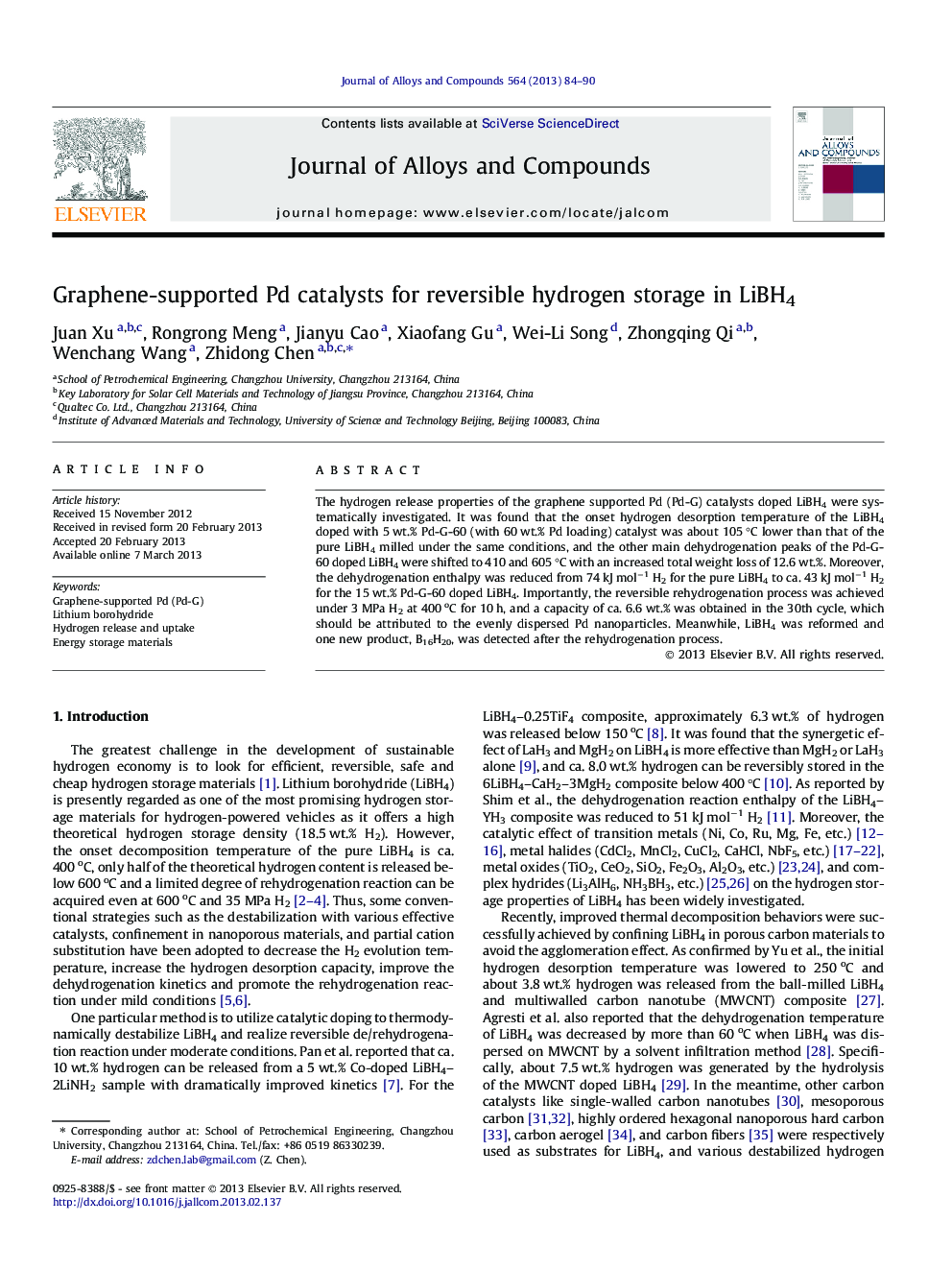| Article ID | Journal | Published Year | Pages | File Type |
|---|---|---|---|---|
| 1614369 | Journal of Alloys and Compounds | 2013 | 7 Pages |
The hydrogen release properties of the graphene supported Pd (Pd-G) catalysts doped LiBH4 were systematically investigated. It was found that the onset hydrogen desorption temperature of the LiBH4 doped with 5 wt.% Pd-G-60 (with 60 wt.% Pd loading) catalyst was about 105 °C lower than that of the pure LiBH4 milled under the same conditions, and the other main dehydrogenation peaks of the Pd-G-60 doped LiBH4 were shifted to 410 and 605 °C with an increased total weight loss of 12.6 wt.%. Moreover, the dehydrogenation enthalpy was reduced from 74 kJ mol−1 H2 for the pure LiBH4 to ca. 43 kJ mol−1 H2 for the 15 wt.% Pd-G-60 doped LiBH4. Importantly, the reversible rehydrogenation process was achieved under 3 MPa H2 at 400 oC for 10 h, and a capacity of ca. 6.6 wt.% was obtained in the 30th cycle, which should be attributed to the evenly dispersed Pd nanoparticles. Meanwhile, LiBH4 was reformed and one new product, B16H20, was detected after the rehydrogenation process.
• Pd-G catalyst was used to enhance the dehydrogenation property and kinetics of LiBH4. • Pd-G shows superior catalytic effect to pure graphene or Pd nanoparticles on LiBH4. • The dehydrogenation enthalpy is reduced by ∼31 kJ mol−1 H2 for Pd-G doped LiBH4. • A reversible rehydrogenation was achieved under mild condition, with a high capacity. • LiBH4 is reformed and new species, B16H20, is detected after rehydrogenation process.
